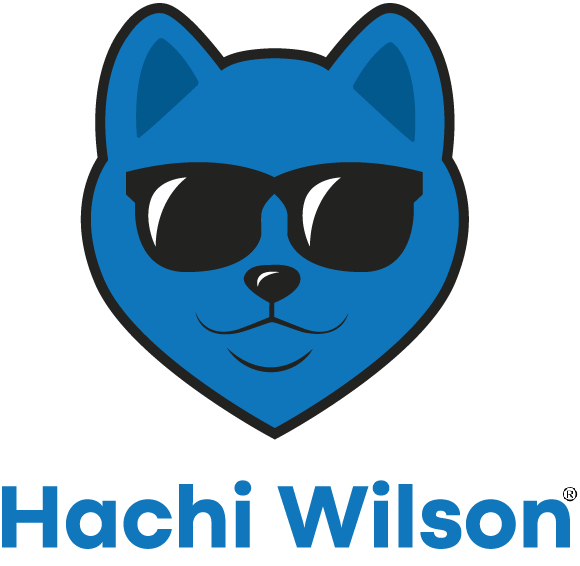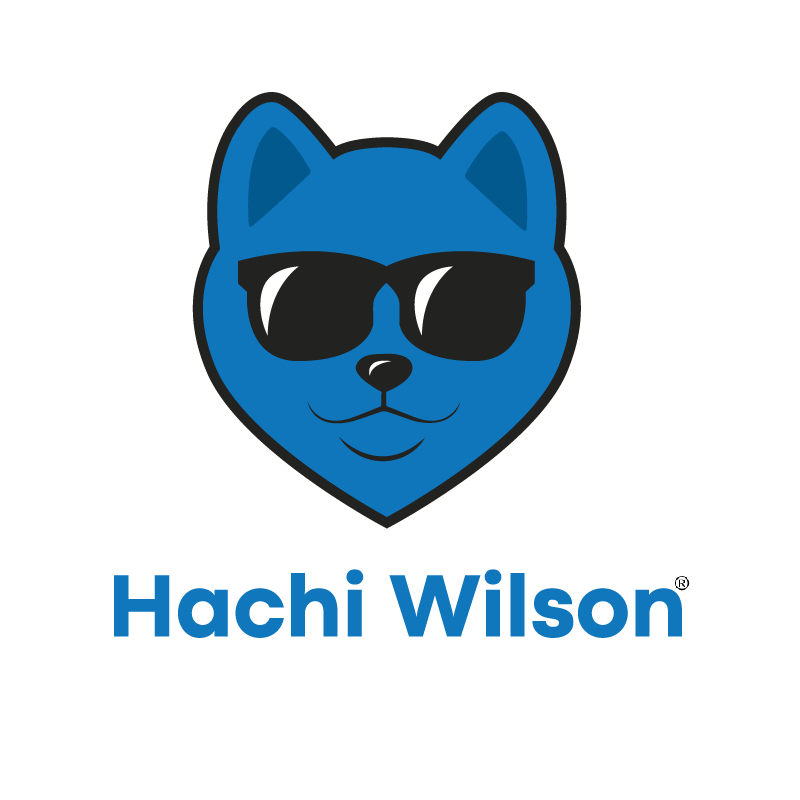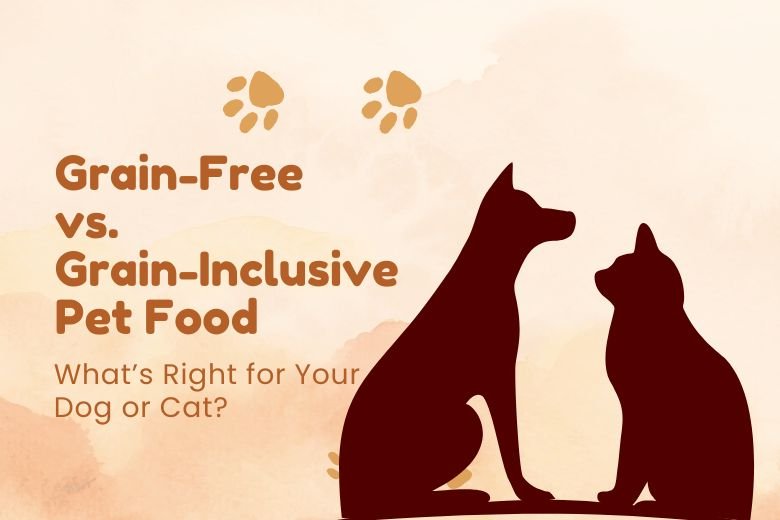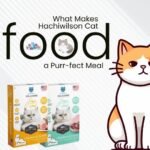Choosing between grain-free pet food and grain-inclusive options for your dog or cat depends on their health needs, allergies, and lifestyle. This guide explores dog food options, cat food choices, and Hachiwilson cat and dog food to help Indian pet owners aged 22–60 make informed decisions.
Have you ever stood in the pet food aisle, staring at bags of grain-free pet food and wondering if it’s really better for your furry friend? As a pet owner in India, you want the best for your dog or cat, but the debate between grain-free and grain-inclusive diets can feel overwhelming. With brands like Hachiwilson cat and dog food gaining popularity, it’s time to dig into what these options mean for your pet’s health. This article breaks down the science, myths, and practical tips to help you choose the right dog food options or cat food choices for your companion.
Pet food choices matter because they directly impact your pet’s energy, coat health, digestion, and even mitochondrial health—the powerhouse of their cells. Whether you’re a young professional in Mumbai or a seasoned pet parent in Delhi, understanding these diets ensures your pet thrives. Let’s explore the pros, cons, and key considerations for grain-free pet food versus grain-inclusive diets.
Why Grain-Free Pet Food Became Popular
Grain-free pet food exploded in popularity as pet owners sought diets closer to what dogs and cats might eat in the wild. The logic? Wolves and wild cats don’t munch on wheat or corn, so maybe our pets shouldn’t either. Brands like Hachiwilson cat and dog food tapped into this trend, offering grain-free formulas packed with protein and alternative carbs.
- Allergy Concerns: Some pets have grain allergies, leading owners to switch to grain-free diets.
- High-Protein Appeal: Grain-free foods often emphasize meat, which feels “natural” for carnivorous pets.
- Marketing Buzz: Pet food brands marketed grain-free as premium, appealing to health-conscious owners.
However, not all pets need grain-free diets. The trend sparked debates about whether grains are harmful or beneficial for dog food options and cat food choices.
Understanding Grain-Inclusive Pet Food
Grain-inclusive pet food contains ingredients like rice, oats, or wheat. These grains provide affordable, digestible energy sources for many pets. For Indian pet owners, grain-inclusive options are often budget-friendly and widely available.
- Nutritional Balance: Grains offer carbohydrates, fiber, and essential nutrients.
- Cost-Effective: Grain-inclusive foods are typically cheaper than grain-free alternatives.
- Digestive Health: Some studies suggest grains like rice support gut health in dogs and cats.
Grains aren’t inherently bad, but low-quality grains or fillers can reduce nutritional value. Choosing high-quality dog food options or cat food choices is key.
Grain-Free Pet Food: Benefits for Dogs and Cats
Grain-free pet food replaces grains with alternatives like sweet potatoes, lentils, or peas. These ingredients aim to provide energy without triggering allergies or digestive issues. Here’s why some Indian pet owners opt for grain-free:
- Allergy Relief: Dogs or cats with grain sensitivities may benefit from grain-free diets. Symptoms like itching or diarrhea often improve.
- High Protein Content: Grain-free foods often prioritize meat, supporting muscle health and mitochondrial health in active pets.
- Weight Management: Lower-carb grain-free formulas can help overweight pets slim down.
For example, Hachiwilson cat and dog food offers grain-free options tailored for pets with sensitive stomachs, making it a popular choice in India.
Potential Risks of Grain-Free Pet Food
Despite its benefits, grain-free pet food isn’t a one-size-fits-all solution. Recent studies have raised concerns about its long-term effects, especially for dogs. Here’s what to watch for:
- DCM Concerns: The FDA investigated a potential link between grain-free diets and dilated cardiomyopathy (DCM) in dogs, a serious heart condition. While not conclusive, it’s a red flag.
- Nutrient Deficiencies: Some grain-free foods lack essential nutrients if not carefully formulated.
- Cost: Grain-free options, like Hachiwilson cat and dog food, can be pricier, which may strain budgets for Indian pet owners.
Always consult a veterinarian before switching to grain-free diets, especially for dogs.
Grain-Inclusive Pet Food: Benefits for Dogs and Cats
Grain-inclusive diets remain a staple for many pets due to their balanced nutrition and affordability. Here’s why they might suit your dog or cat:
- Energy Source: Grains like brown rice provide steady energy for active pets.
- Fiber for Digestion: Whole grains support healthy digestion and regular bowel movements.
- Affordability: For Indian pet owners aged 22–60, grain-inclusive dog food options and cat food choices are often more accessible.
For instance, a study from the Journal of Animal Science found that dogs on grain-inclusive diets had similar health outcomes to those on grain-free diets when the food was high-quality
When to Choose Grain-Free for Your Pet
Not every pet needs grain-free pet food. Here’s when it might be the right choice:
- Food Allergies: If your dog or cat shows signs of grain allergies (itching, ear infections, or digestive upset), grain-free could help.
- Sensitive Stomachs: Pets with sensitive digestion may tolerate grain-free ingredients like peas or sweet potatoes better.
- High Activity Levels: Active dogs or cats may benefit from the protein-heavy focus of grain-free diets, supporting mitochondrial health.
Brands like Hachiwilson cat and dog food offer grain-free formulas designed for these needs, popular among Indian pet owners.
When to Stick with Grain-Inclusive Diets
Grain-inclusive diets are often the better choice for pets without specific dietary issues. Consider these factors:
- Healthy Digestion: Most pets digest grains like rice or oats well, supporting gut health.
- Budget-Friendly: Grain-inclusive foods are typically more affordable, a key factor for Indian households.
- No Allergies: If your pet shows no signs of grain sensitivity, there’s no need to switch.
For example, a mid-range grain-inclusive dog food option might suit a healthy Labrador in Bangalore, while a grain-free formula could be better for a cat with allergies.
How to Evaluate Pet Food Quality
Whether you choose grain-free or grain-inclusive, quality matters. Here’s how to assess dog food options and cat food choices:
- Check Ingredients: Look for whole meats (e.g., chicken, fish) as the first ingredient, not by-products.
- Avoid Fillers: Steer clear of foods with excessive corn, soy, or artificial additives.
- Nutritional Balance: Ensure the food meets AAFCO standards for complete nutrition.
- Brand Reputation: Trusted brands like Hachiwilson cat and dog food prioritize quality and transparency.
Reading labels helps you make informed choices for your pet’s long-term health.
Hachiwilson Cat and Dog Food: A Closer Look
Hachiwilson cat and dog food is gaining traction in India for its tailored formulas. Available in both grain-free and grain-inclusive options, Hachiwilson caters to diverse pet needs. Here’s why it’s popular:
- Local Appeal: Formulated with Indian pet owners in mind, addressing local climate and lifestyle factors.
- Variety: Offers dog food options and cat food choices for different life stages and health needs.
- Quality Ingredients: Emphasizes high-protein, nutrient-rich recipes to support mitochondrial health.
For example, their grain-free salmon formula is a hit for cats with sensitive stomachs, while their grain-inclusive chicken recipe suits budget-conscious dog owners.
Grain-Free vs. Grain-Inclusive: A Side-by-Side Comparison
Choosing between grain-free pet food and grain-inclusive diets can be tough. Here’s a quick comparison:
| Factor | Grain-Free | Grain-Inclusive |
|---|---|---|
| Best For | Pets with allergies or sensitive digestion | Healthy pets without dietary issues |
| Cost | Higher | More affordable |
| Protein Content | Often higher | Moderate, depends on formula |
| Digestive Health | Good for sensitive stomachs | Good for most pets, high fiber |
| Risks | Potential DCM link in dogs | Possible allergies in sensitive pets |
This table can guide Indian pet owners in selecting the right dog food options or cat food choices.
The Role of Mitochondrial Health in Pet Nutrition
Mitochondrial health is a buzzword in pet nutrition, and for good reason. Mitochondria are the energy powerhouses in your pet’s cells, driving everything from muscle function to immune response. Both grain-free and grain-inclusive diets can support mitochondrial health if they include:
- Antioxidants: Found in ingredients like blueberries or spinach, which reduce oxidative stress.
- Healthy Fats: Omega-3s from fish oil, common in Hachiwilson cat and dog food, boost cellular energy.
- Balanced Nutrients: High-quality proteins and carbs fuel mitochondria effectively.
Choosing a diet that supports mitochondrial health ensures your pet stays active and vibrant, whether you opt for grain-free or grain-inclusive dog food options.
Tips for Transitioning Your Pet’s Diet
Switching between grain-free and grain-inclusive diets requires care to avoid digestive upset. Follow these steps:
- Gradual Transition: Mix 25% new food with 75% old food for 3–4 days, then increase to 50/50, and so on.
- Monitor Reactions: Watch for vomiting, diarrhea, or lethargy, and consult a vet if issues persist.
- Hydration: Ensure your pet has plenty of water, especially with grain-free diets that may be denser.
- Consult a Vet: Especially important for pets with health conditions or when switching to grain-free pet food.
For Indian pet owners, brands like Hachiwilson cat and dog food provide clear transition guides on their packaging.
Grain-Free vs. Grain-Inclusive Pet Food – Frequently Asked Questions
What is grain-free pet food, and is it better for my pet?
Grain-free pet food excludes grains like wheat or corn, using alternatives like peas or sweet potatoes. It’s ideal for pets with grain allergies but not necessarily better for all pets. Consult your vet to determine the best dog food options or cat food choices for your pet.
Are there risks to feeding my dog grain-free food?
Yes, some studies suggest a potential link between grain-free diets and heart issues like DCM in dogs. Always choose high-quality grain-free pet food and monitor your pet’s health. Learn more about DCM risks.
Can cats eat grain-inclusive diets?
Most cats thrive on grain-inclusive cat food choices if they have no allergies. Grains like rice provide energy and fiber, but ensure the food is meat-heavy, as cats are obligate carnivores.
Is Hachiwilson cat and dog food a good choice for Indian pets?
Hachiwilson cat and dog food offers both grain-free and grain-inclusive options tailored for Indian climates and pet needs. Its high-quality ingredients make it a solid choice for pet owners aged 22–60. See more about Hachiwilson.
How do I know if my pet needs grain-free food?
Look for signs like itching, ear infections, or digestive issues. A vet can run allergy tests to confirm if grain-free pet food is necessary. Always prioritize high-quality dog food options or cat food choices.
Does grain-free pet food support mitochondrial health?
Yes, high-quality grain-free pet food with antioxidants and healthy fats can support mitochondrial health. Look for brands like Hachiwilson cat and dog food with omega-3s and nutrient-rich ingredients
Conclusion
Choosing between grain-free pet food and grain-inclusive diets depends on your pet’s unique needs, from allergies to activity levels. High-quality dog food options and cat food choices, like Hachiwilson cat and dog food, can support your pet’s health, including mitochondrial health. Consult your vet, read labels, and monitor your pet’s response to find the perfect fit. Share your pet’s diet journey in the comments or check out our guides on pet nutrition basics and choosing the right pet food.




